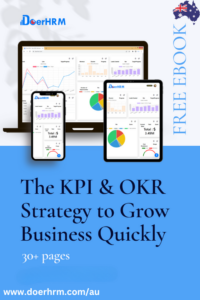Do you want to create a culture of accountability on your team, and gets excellent outcomes as a result? As a manager, setting goals for your company as a means of achieving great results is not easy. As you know, regardless of the organizational learning process that you adopt, nothing can be learned overnight. However, is it possible to make it faster by using OKRs? But how will this help teams focus, along with creating alignment and accountability?
What Are OKRs?
Going from better focus to transparency, better team alignment, and accountability, OKR can assist you in achieving the company’s goals by helping the members of its team to take action and set their own goals.
OKR main components = Objective + Key Results
The main components of the OKR are the following: objective and key results. The latter mostly tackles how said objectives are to be measured. The OKR can feature initiatives referring to the work necessary to drive that particular progress.
OKR = Objective + Key Results + Initiatives
This concept will also follow quite a few rules in order to ensure the members of the team learn how to prioritize, focus, scale, and align the outcome of their responsibilities and tasks.
Quite a lot of companies are using the OKR system, as it helps them deliver strategies to the members of their teams in a quantifiable and practicable manner. The OKR will also help these businesses move forward, going from their output to the work outcome-based methods.
Improving the Team Focus
OKR has the ability to improve focus
One of the most important aspects of OKRs is the ability to improve focus. Every company wishes to be more focused – but unfortunately, this is also the attribute that is most likely to be subjected to the law of unintended consequences.
To make it more understandable, OKRs are not a way for you to show how much work you have to do or how busy you are. Instead, the OKRs intend to tell you what your focus should be for you at that very moment. What would be a great win for the company if you decided to focus on it right now?
However, the key here is to write good OKRs that focus on driving value. The more detailed they are, the more commitment your team should be able to put into that specific goal. If the OKRs are vague and quick, you won’t be able to show the necessary commitment, and you might not even know where to start to do so.
Vague and quick OKR = Less commitment
If the OKR is properly written, it will help you stay focused on your goal. This way, your business will be more productive with each passing day. After all, your whole reason for setting up the OKR is to create focus and reach towards your goal – which is why this part needs to be attentively worked upon.
Creating Alignment for Better Productivity
Most companies that adopt OKRs do so because they wish to improve the alignment within their company. However, achieving that alignment is a very common issue that most companies deal with when setting their OKR programs.
There are two alignment types that a company may go for: strategic alignment and horizontal alignment. The horizontal alignment focuses on how the result of an objective will be able to align strategically. Strategic alignment is also commonly referred to as vertical alignment.
Strategic alignment = Vertical alignment
On the other hand, we also have horizontal alignment, which involves how your teams align together – how they function as one.
Horizontal alignment = Teams/Departmental alignment
Employees generally feel like they can rely on their higher-ups and other team members – but when they do so, they no longer feel the need to rely on other departments as well. This is actually quite problematic, as most of the results come from good cooperation between the teams.
In the end, the OKRs will allow you to document dependencies so that you can lead to better alignment. It will help you find out exactly how other teams within the organization can help you, and what specific help they will need to get the job done. By setting OKRs, you will set prioritization in place, allowing you to move forward with the company.
Boosting Accountability
While accountability won’t be dramatically boosted overnight, it will surely improve when you use OKRs to manage your teams. By sharing these OKRs, you’ll be helping your team members clarify all the expectations that they might have and figure out what exactly they wish to achieve. In other words, it allows you to discuss who exactly is accountable for what.
OKRs will enable you to discuss the efficacy of other people, bringing the OKRs of other teams into the conversation. Rather than focusing on excuses and politics of an unclean or unwanted goal, you will help each other shift the focus so that accountability becomes clear.
Excuses , Politics, Unwanted Goals [cross them out]
By using OKRs, you’ll be gaining a goal setting method that will boost the organization of your company. Focus, alignment, and accountability are three great aspects when it comes to reaching a goal – and OKRs should be able to set you on a straight path.

I hope you enjoy reading this blog post.
If you want my team at DoerHRM to help you build a winning team for your company, just click to speak with our KPI consultant.








